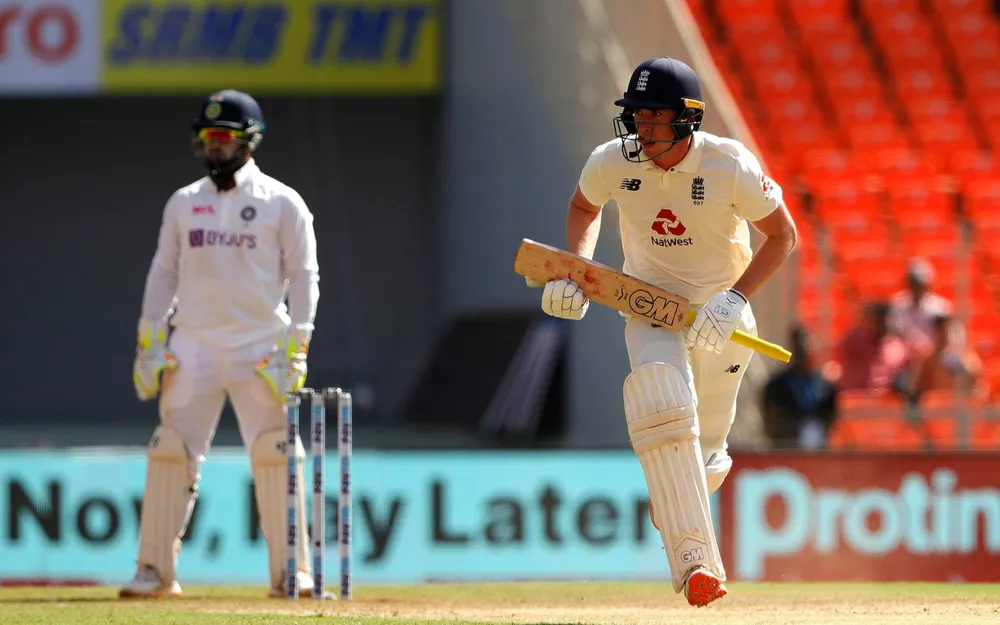IND vs ENG | 4th Test Day 1 Talking Points - Siraj’s trust in his skill and England’s 'spin hangover'
As the nature of the Ahmedabad pitch took a complete flip, England found their groove in parts but the lapse in concentration resulted in the side bundling out for 205 runs in the first innings. While Siraj bowled like a man possessed, England batsmen's approach was questionable, to say the least.

Mohammed Siraj and the dance with conviction
For a long time in the history of Indian cricket, Mohammed Siraj will be remembered as a godsend in the grab of a pacer whose very presence altered the narrative after the most embarrassing lows the country’s cricket team has ever witnessed. He bossed it at MCG, was more than a handful at the SCG, and held the ball aloft at the Gabbatoir to push the side for one of the astonishing comebacks ever witnessed on a sporting field. The expectations are now high and every ball would document his journey to the top echelon of the sport in the most trying format of them all.
And a brief duty in Chennai, where he bowled just 8 overs in two innings combined, Siraj was in the thick of the action today in Ahmedabad to fill the void created by Jasprit Bumrah. Not only did he step up to the plate quite handsomely, but also ensured India now have a pacer ready for all occasions from now on.
Siraj was a combination of a lot of things. He has the ability to swing the ball both ways just like Shami does on unresponsive wickets. He brings the oddballs back with precision, just the way Ishant Sharma does. All of that with a clear understanding of the pitch. His conviction to push the speed a bit when the trigger demanded was absolutely brilliant - the prime example was that of Jonny Bairstow's dismissal when he bowled a rapidly fast delivery in the sea of 146kph balls. It showed how much he trusts his own skill and that’s always a good trait to have for a pacer on the unforgivable Indian tracks.
England’s mental scars reflected in their approach
Ahead of the match, Joe Root spoke about England needing to play for the straighter ones and let the ball spin past the outside edge when it turns. Going by their approach in the last two games, these tactics completely made sense but after their showing on the opening day of the fourth Test, it is clear that those words were all in the vacuum, and in reality, the scars of the Chennai and Pink ball was very fresh.
Dominic Sibley, whose batting form has fizzled out after the opening day of the series, played for the turn only in the sixth over of the innings when it was clear that the wicket had no venom. He was undone by a relatively straighter one following an inside edge. Instinctively, England batsmen were looking for the turning ones, missing the line of the stumps on the straighter balls, to push the bar off the radar.
Stokes’ dismissal to Washington Sundar calls for greater scrutiny in that regard. Stokes, for the first 100 balls he faced, looked very solid in his part and looked in control for the major part of it. However, his kryptonite of facing off-spinners from round the wicket got him once again, as he played for the natural turn when the ball was actually holding the length and moved with the arm. That left to question if England really had any plans for the bug that caught them off guard in the last two games or was it the mental scar of the last two games that is pushing the very limit of objectivity. Your guess is as good as mine.
England’s selection masterstroke keeps India on the edge
Over the course of this series, England have made many tactical blunders and dodgy selection calls, not least playing three pacers and one specialist spinner in the third Test, where spinners picked all but two wickets. Stuart Broad and James Anderson were almost an aftermath and Archer’s importance to the line-up was only for that fiery spell against Shubman Gill under lights on Day 1.
However, at the same venue in the fourth Test, England turned a corner and from the evidence of Day 1, the call to add an extra batsman and an all-rounder seems like the most logical decision. Playing Stuart Broad on this wicket wouldn’t have made any sense, for his record in India is worse than any part-timer even, thus it made complete sense to add Dom Bess to draft in straightaway. Knowing the kind of gritty batsman that he is and the impact he had in Sri Lanka and in the first game in Chennai, England lengthened their batting order as insurance for the possible batting implosion.
That can be best viewed from Daniel Lawrence’s contribution. Even though Stokes was the best batsman of the day, Lawrence seemed comfortably assured in his dogmatic approach and scored runs freely with some eye-catching shots. On wickets like these where spinners would rule the roost, it was a timely decision by the English management that has the potential to change the fortune around.

Comments
Sign up or log in to your account to leave comments and reactions
0 Comments